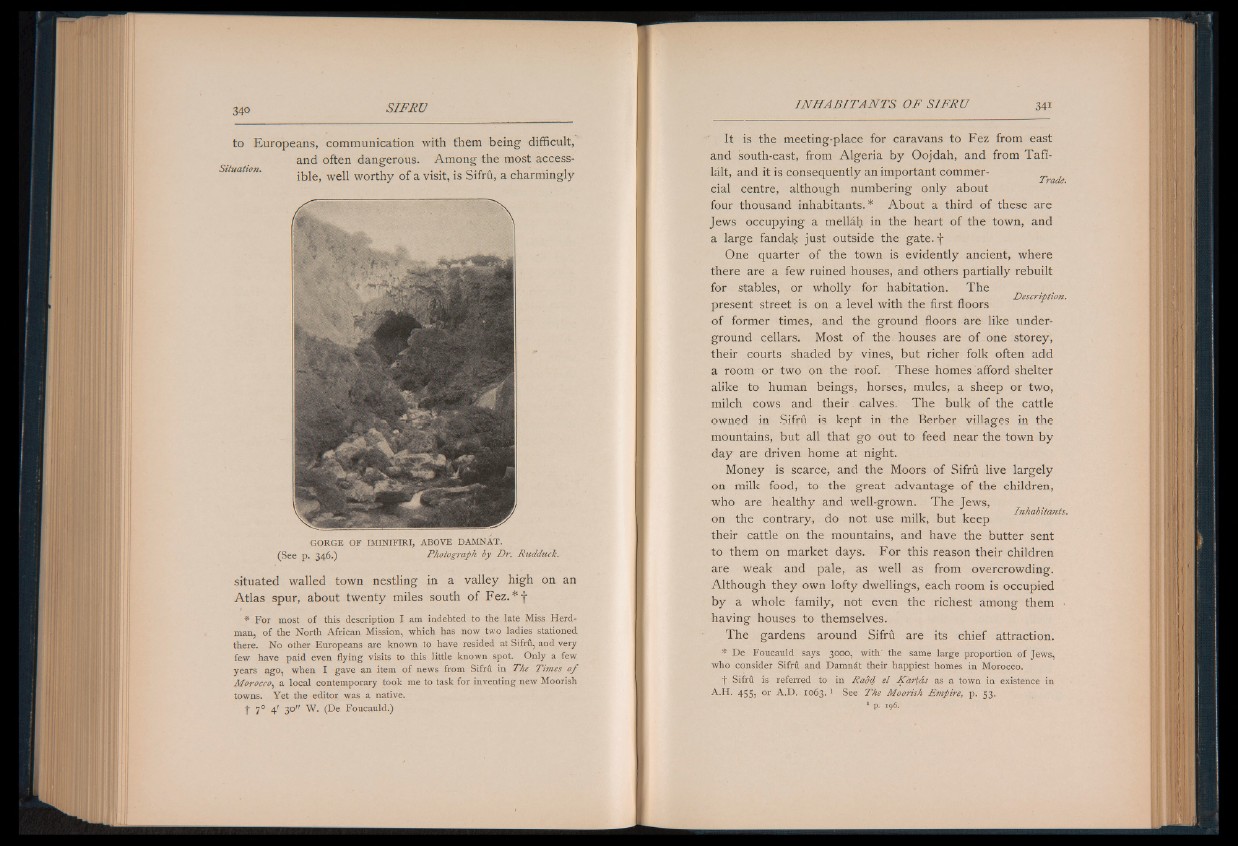
to Europeans, communication with them being difficult,
and often dangerous. Among the most accessible,
well worthy of a visit, is Sifrû, a charmingly
GORGE OF IMINIFIRI, ABOVE DAMNAT.
(See p. 346.) Photograph by Dr. Rudduck.
situated walled town nestling in a valley high on an
Atlas spur, about twenty miles south of Fez. * f
* For most of this description I am indebted to the late Miss Herd-
man, of the North African Mission, which has now two ladies stationed,
there. No other Europeans are known to have resided at Sifru, and very
few have paid even flying visits to this little known spot. Only a few
years ago, when I gave an item of news from Sifril in The Times o f
Morocco, a local contemporary took me to task for inventing new Moorish
towns. Yet the editor was a native,
t 7° 41 3° " W. (De Foucauld.)
It is the meeting-place for caravans to Fez from east
and south-east, from Algeria by Oojdah, and from Tafilalt,
and it is consequently an important commer- ^
cial centre, although numbering only about
four thousand inhabitants.* About a third of these are
Jews occupying a mellah in the heart of the town, and
a large fandak just outside the g a te .f
One quarter of the town is evidently ancient, where
there are a few ruined houses, and others partially rebuilt
for stables, or wholly for habitation. The
, , . , , r n Description. present street is on a level with the first floors
of former times, and the ground floors are like underground
cellars. Most of the houses are of one storey,
their courts shaded by vines, but richer folk often add
a room or two on the roof. These homes afford shelter
alike to human beings, horses, mules, a sheep or two,
milch cows and their calves. The bulk of the cattle
owned in Sifru is kept in the Berber villages in the
mountains, but all that go out to feed near the town by
day are driven home at night.
Money is scarce, and the Moors of Sifru live largely
on milk food, to the great advantage of the children,
who are healthy and well-grown. The Jews,
. 1 . , -ii 1 1 Inhabitants. on the contrary, do not use milk, but keep
their cattle on the mountains, and have the butter sent
to them on market days. For this reason their children
are weak and pale, as well as from overcrowding.
Although they own lofty dwellings, each room is occupied
by a whole family, not even the richest among them •
having houses to themselves.
The gardens around Sifru are its chief attraction.
* De Foucauld says 3000, with’ the same large proportion of Jews,
who consider Sifru and Damn£t their happiest homes in Morocco.
t Sifru is referred to in Raod el K'arbas as a town in existence in
A.H. 455, or A.D. 1063.1 See The Moorish Empire, p. 53.
1 p. 196.